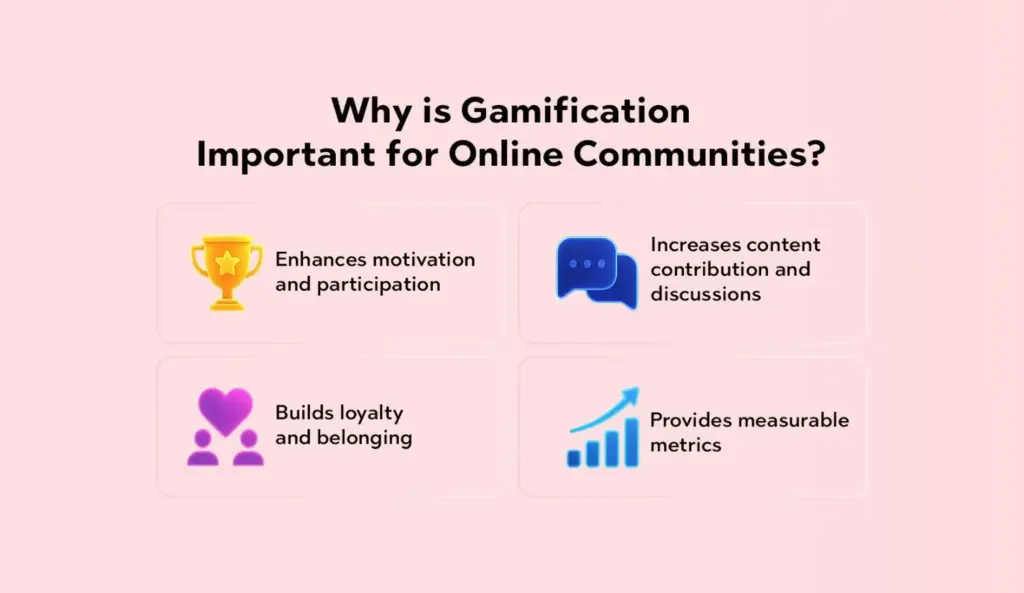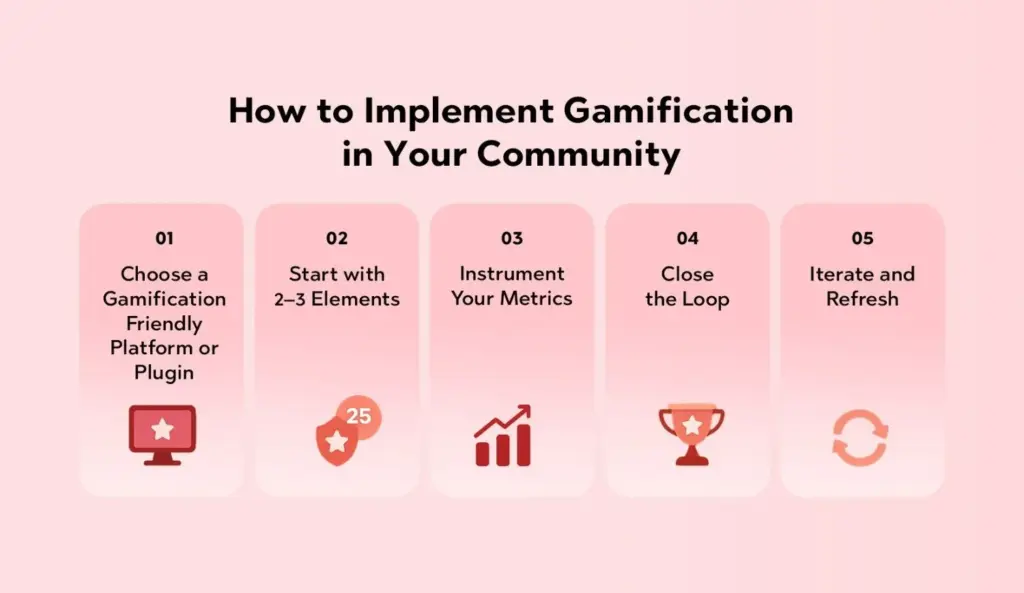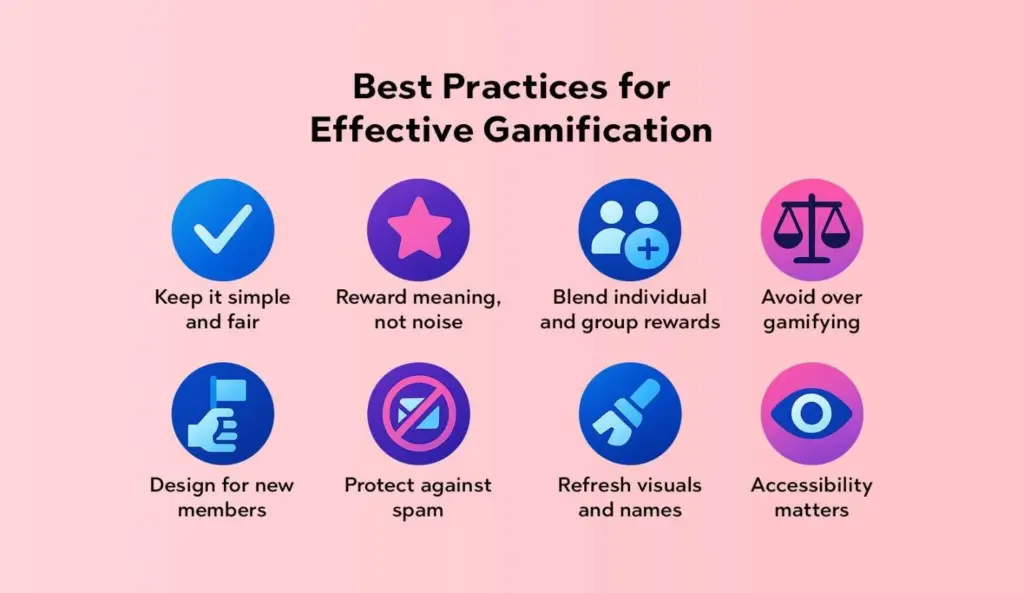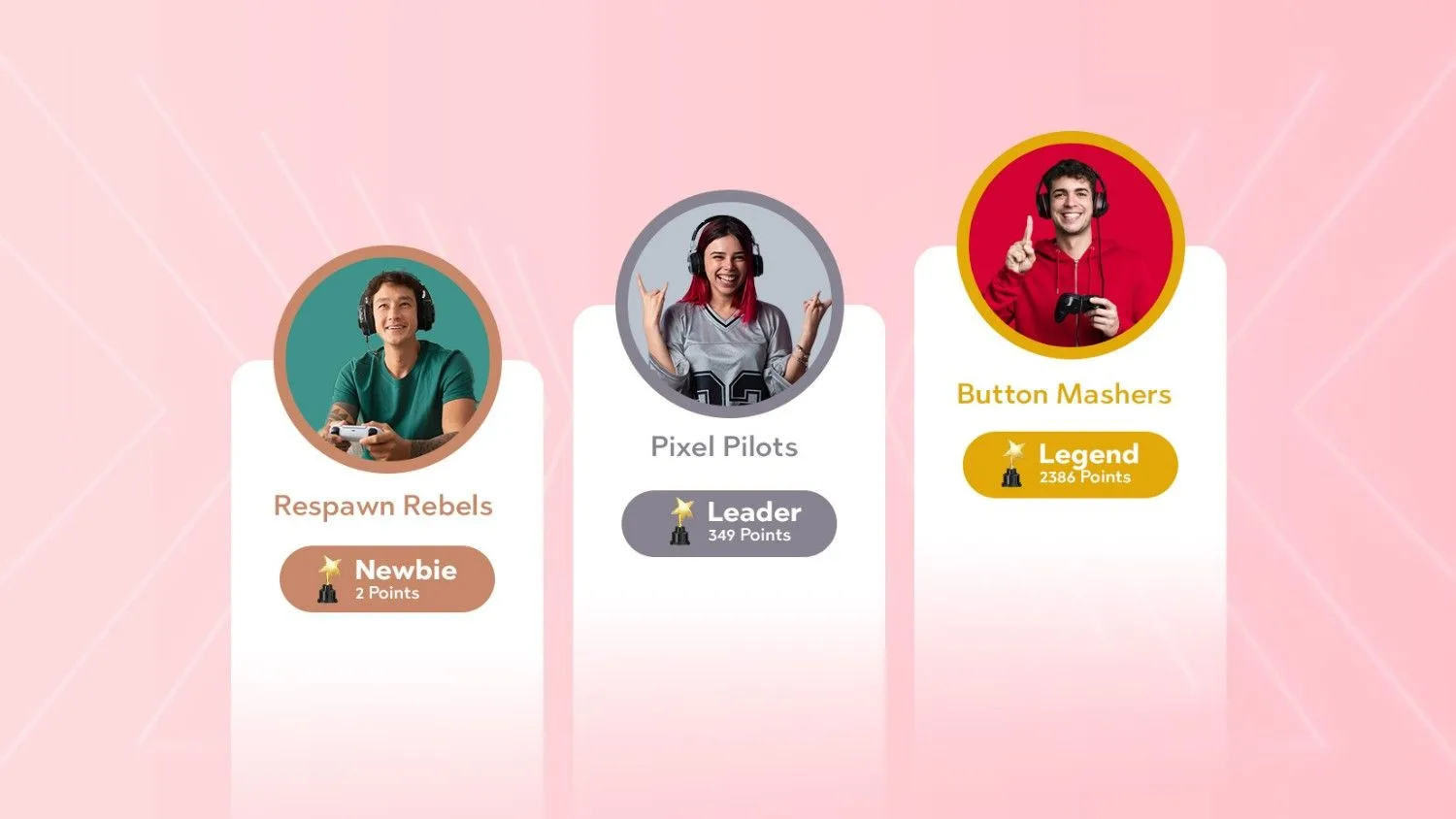Top Gamification Ideas to Increase Community Engagement
Community engagement is the heartbeat of thriving online spaces. Whether you run a brand community, a creator hub, a customer support forum, or a private membership network, the metric that silently predicts your long‑term success is engagement — not just headcount. Members who consistently show up, contribute, and connect with others generate the content, feedback, and relationships that keep your community alive. The problem? Attention is scarce, distractions are everywhere, and even valuable communities can feel like a chore without the right motivation loops.
That’s where gamification steps in. By weaving game‑like elements — points, badges, leaderboards, streaks, missions, and more — into your community experience, you make participation feel fun, meaningful, and rewarding. Done right, gamification can lift participation rates, boost retention, and turn lurkers into loyal contributors who actively share insights, content, and enthusiasm.
In this in‑depth guide, we’ll break down the psychology of gamification in online communities, show you practical gamification ideas you can deploy today, and walk you through implementing them step‑by‑step. You’ll also gain best practices, insights into common pitfalls to avoid, and a look at what’s next as AI and digital collectibles continue to evolve the space.
If you’re ready to increase user participation with proven engagement strategies, let’s dive in.
What is gamification in online communities?
At its simplest, gamification applies game design mechanics to non‑game contexts to motivate behavior. In communities, this means utilizing elements such as points, badges, leaderboards, challenges, and quests to encourage members to post, comment, share, attend, and assist others.
Why obsess over engagement? Because engagement compounds. A highly engaged member contributes content that attracts others, sparks discussion, and creates value that keeps people coming back. Engagement also predicts member retention, conversion to paid tiers or purchases, and content sharing beyond the platform. It’s the closest thing to a universal health score for communities.
When you add the right gamified incentives, you create reward loops that reinforce positive behaviors — posting, answering questions, welcoming newcomers, and sharing helpful resources. Over time, these loops drive participation, loyalty, and a vibrant culture.
What is Gamification in Community Engagement?
Definition: Gamification is the use of game‑like elements — points, badges, leaderboards, and challenges — to make community participation fun and rewarding.
1. The psychology behind gamification
- Reward loop: When an action produces a visible reward (points, recognition, progress), we’re more likely to repeat it. Consistency turns actions into habits.
- Intrinsic vs. extrinsic motivation: Badges and points are extrinsic, but they can amplify intrinsic drivers such as mastery, purpose, and belonging. The best systems support both.
- Progress and competence: Humans love to see progress. Levels, streaks, and skill paths signal mastery and keep members moving forward.
- Social recognition: Public shoutouts, leaderboards, and peer nominations tap into our desire for status and appreciation — powerful motivators when used respectfully.
- Loss aversion: Streaks make people reluctant to miss a day and “lose” progress, encouraging consistent micro‑actions.
2. Familiar examples you already know
- Reddit Karma: Rewards contributions that the community upvotes, surfacing reputable voices.
- Duolingo Streaks & Leagues: Daily goals, streak protection, and tiered leagues keep learners showing up.
- Stack Overflow Badges: Structured achievements for helpful answers and sustained contributions.
- Fitness Apps (e.g., Apple Watch): Rings, milestones, and monthly challenges that push daily consistency.
These models translate cleanly to community spaces, regardless of your niche.
Why is Gamification Important for Online Communities?

- Enhances motivation and participation: Members see immediate feedback for helpful actions, which creates momentum.
- Increases content contribution and discussions: When posts, answers, and shares earn rewards, members create more value.
- Builds loyalty and belonging: Recognition (badges, spotlights, titles) strengthens identity within the group.
- Provides measurable metrics: Points, levels, streaks, and challenge completions provide admins with clear data to track.
- A directional stat: Communities that thoughtfully implement gamification frequently report materially higher activity; many cite up to ~48% higher active participation after rollout. Your mileage will vary, but the lift can be significant when aligned with meaningful actions.
Top Gamification Ideas to Increase Community Engagement
Below are ten practical gamification ideas you can launch in any modern community platform. Mix and match based on your goals, member personas, and content format.
1) Points and Rewards System
What it is: Members earn points for actions like creating posts, commenting, answering questions, attending events, inviting friends, or completing onboarding.
How to set it up:
- Map points to your north‑star behaviors. For example: 10 points for a thoughtful post, 5 for a helpful comment, 3 for upvoting, 20 for verified solutions.
- Provide redeemable rewards: role titles, special badges, early access to content, discount codes, event tickets, or credits for community merch.
- Add anti‑spam safeguards: rate limits, minimum character counts, and moderator review for low‑effort activity.
Example: Members earn 10 points for every new post they share and 20 points when their answer is marked as a solution.
Pro tip: Pair points with seasonal resets (e.g., quarterly) so new members can catch up while lifetime totals still track long‑term contribution.
2) Challenges and Missions
What it is: Time‑boxed quests that encourage specific behaviors. Weekly “Share your best tip,” monthly “Resource Roundup,” or themed learning sprints.
How to set it up:
- Publish a calendar of challenges with clear success criteria.
- Offer completion badges and bonus points for streaking across multiple challenges.
- Spotlight standout entries in a monthly recap post or live session.
Why it works: Challenges add urgency and give members a reason to participate now, boosting consistency without heavy moderation.
3) Leaderboards
What it is: Public rankings that celebrate top contributors by points, accepted answers, challenge wins, or badges.
How to set it up:
- Show weekly and monthly boards (not just all‑time) to lower the barrier for newer members.
- Display avatars and short titles (“Top Helper,” “Insight Machine”) for personality.
- Consider opt‑out and anonymized aliases for privacy‑conscious members.
Pro tip: Reset leaderboards monthly or seasonally to keep the race fresh while preserving lifetime stats on member profiles.
4) Badges and Achievements
What it is: Visual markers awarded for milestones: First Post, Top Contributor, 5 Helpful Answers, Event Regular, Welcome Wagon.
How to set it up:
- Bundle badges into tracks (Learning, Helping, Leadership, Creativity) so members can pursue identities that match their strengths.
- Use tiered badges (Bronze → Silver → Gold) to signal progression.
- Make criteria transparent and visible on badge hover or in a badge directory.
Why it works: Badges turn invisible good deeds into visible micro‑status, which motivates both the earner and others.
5) Streaks and Progress Tracking
What it is: Daily or weekly counters that reward consistent participation — think Duolingo, but for your community.
How to set it up:
- Let members set personal cadence goals (e.g., “2 helpful contributions per week”).
- Offer streak protection tokens for vacations or emergencies.
- Show gentle reminders when streaks are about to break.
Pro tip: Pair streak milestones with small perks: custom profile frames at 7, 30, 100 days; access to exclusive threads at 12 weeks.
6) Polls and Interactive Quizzes
What it is: Lightweight, low‑friction activities that invite everyone to click, vote, or learn.
How to set it up:
- Run weekly polls about topics, product ideas, or upcoming events.
- Host short quizzes with leaderboards for bragging rights.
- Offer participation points for voting and bonus points for thoughtful comments.
Why it works: Polls and quizzes lower the activation energy. Even lurkers will often click a button — and that small action can lead to bigger ones.
7) Peer Recognition and Shoutouts
What it is: Members can nominate others for titles like Member of the Month, Rising Star, or Helpful Contributor.
How to set it up:
- Provide a simple nomination form and rotating judges (staff + respected members).
- Announce winners publicly and add a permanent badge to their profiles.
- Encourage nominees with honorable mentions — recognition scales well.
Why it works: Recognition from peers carries emotional weight, building trust and reinforcing a pro‑social culture.
8) Virtual Coins or Tokens
What it is: In‑platform currency that members earn and spend. Coins can tip great posts, unlock premium content, or redeem perks.
How to set it up:
- Award coins for behaviors with real community value (solutions, tutorials, event hosting).
- Create a store: shoutout credits, coaching sessions, merch, partner discounts, or gated channel access.
- Allow micro‑tipping so appreciation becomes a habit.
Pro tip: Separate points (reputation) from coins (utility). One signals status; the other fuels an economy.
9) Learning Levels or Skill Progression
What it is: Structured learning paths with levels (Beginner → Intermediate → Advanced → Expert). Members unlock badges and privileges as they level up.
How to set it up:
- Define level criteria: complete 3 tutorials, publish 1 how‑to post, answer 2 questions with accepted solutions, and pass a short quiz.
- Offer level‑specific perks: access to mentor channels, event discounts, or the right to host community sessions.
- Visualize progress on member profiles so advancement is tangible.
Why it works: Progression taps into mastery and purpose — intrinsic drivers that sustain engagement far beyond novelty.
10) Team Competitions and Group Goals
What it is: Collaborative contests where members rally around shared objectives: ship a community resource library in a month, co‑create a zine, or raise funds for a cause.
How to set it up:
- Form balanced teams (mix veterans and newcomers) and assign captains.
- Score both output (deliverables) and behavior (helpfulness, documentation).
- Celebrate team retrospectives so learning outlives the competition.
Pro tip: Alternate competitive sprints with cooperative quests where the entire community works toward a single progress bar and unlocks a collective reward when it fills.
How to Implement Gamification in Your Community

You don’t need to overhaul your platform overnight. Start small, learn, and iterate.
Choose a Gamification‑Friendly Platform or Plugin
Many modern community platforms (e.g., Circle, Discourse, Tribe/Insided) provide native or add‑on mechanics. Choose tools that make it easy to assign points, issue badges, run challenges, and display leaderboards.
Start with 2–3 Elements
Launch with badges + points + a monthly challenge. Keep the system understandable and ensure every reward maps to valuable behaviors.
Instrument Your Metrics
Track weekly active members, post frequency, comment/answer ratio, challenge participation, streak counts, and cohort retention.
Close the Loop
Showcase winners, publish monthly recaps, and offer tangible (not just symbolic) perks so rewards feel meaningful.
Iterate and Refresh
Retire stale badges, rotate challenge themes, and introduce seasons so your system never feels dusty. Watch for unintended gaming and adjust point weights accordingly.
Looking for a platform that makes this easy? Explore Thrico’s community building tools to design points, badges, leaderboards, and more — without wrestling with plugins.
Best Practices for Effective Gamification

- Keep it simple and fair. Members should instantly understand how to earn points and what rewards mean.
- Reward means, not noise. Prioritize accepted answers, tutorials, peer recognition, and collaborations over raw post volume.
- Blend individual and group rewards. Celebrate personal milestones and team wins to balance competition with camaraderie.
- Avoid over‑gamifying. Not everything needs points. Leave space for organic connection and deep work.
- Design for new members. Use onboarding quests and easy first wins (e.g., Introduce Yourself badge) to reduce the intimidation curve.
- Protect against spam. Add friction where needed: character minimums, cooldowns, moderator flags, and quality thresholds.
- Refresh visuals and names. Rotating badge art, seasonal titles, and fresh challenge themes keep excitement high.
- Accessibility matters. Ensure badges, colors, and progress visuals work for all members (alt text, contrast, screen reader labels).
Common Mistakes to Avoid
- Over‑indexing on points. Points alone can create noisy, low‑quality activity. Tie points to outcomes that help members.
- Ignoring intrinsic motivation. Give members a purpose: learning, mastery, impact, belonging. The best systems elevate these, not overshadow them.
- Pure competition, no collaboration. Leaderboards without peer recognition or team goals can demotivate non‑winners.
- One‑size‑fits‑all rewards. Different personas crave different rewards. Offer a menu: recognition, access, learning, perks.
- No feedback loop. Don’t set‑and‑forget. Ask members what feels meaningful and what feels like busywork, then iterate quickly.
Benefits of Gamification for Community Growth
- Higher retention and loyalty: Members with clear progress paths and recognition stick around longer.
- More and better content: Structured rewards encourage tutorials, case studies, and thoughtful answers, not just chatter.
- Richer discussions: Polls, quizzes, and challenges spark ongoing debates and knowledge‑sharing.
- Stronger brand–community connection: Visible appreciation and perks deepen the relationship between your organization and its members.
- Operational clarity: Admins gain granular metrics to forecast growth, identify champions, and reward impact.
Also Read in Details: The Benefits of Gamification in Community Platforms
The Future of Gamification in Online Communities
- AI‑based personalization: Adaptive rewards that tailor challenges, content recommendations, and next best actions to each member’s behavior and goals.
- Digital collectibles and credentials: NFT‑style badges or verifiable credentials that members can showcase across platforms and even on professional profiles.
- Learning x Gaming convergence: Skill trees, boss battles (capstone projects), and cooperative quests that blur the line between course and community.
- Ethical gamification: Thoughtful guardrails that prioritize well‑being (e.g., healthy streak design, private modes, mindful notifications).
FAQs
It’s the use of game mechanics like points, badges, leaderboards, challenges, and streaks to motivate and reward useful participation in your online community.
By providing immediate feedback and visible progress for helpful actions. Members post more, reply more, and return more often when their contributions are recognized and rewarded.
Reddit’s Karma system, Duolingo’s streaks and leagues, Stack Overflow’s badges, and fitness app challenges are popular models you can adapt to your community.
Combine symbolic rewards (badges, titles, shoutouts) with tangible perks (exclusive channels, early access, discounts, event tickets, coaching sessions). Consider a coin system for tipping and redemption.
Many platforms (e.g., Circle, Discourse, Tribe/Insided) offer native or plugin‑based systems. If you prefer an all‑in‑one approach, explore Thrico’s community building tools for points, badges, leaderboards, and challenges.
Start simple: a welcome badge, a monthly challenge, and one leaderboard. Focus on recognition and collaboration rather than complex economies.
Higher retention, more content, deeper learning, stronger relationships, and clearer metrics for admins.
They spark friendly competition and visibility for top contributors. Use seasonal resets and multiple categories so more members see themselves on a board.
Overemphasizing points, ignoring intrinsic motivation, designing only for competitive personalities, and failing to refresh systems or gather feedback.
Almost. It works best when rewards align with your community’s purpose (learning, support, creation). Keep options inclusive and avoid designs that pressure unhealthy behaviors.

